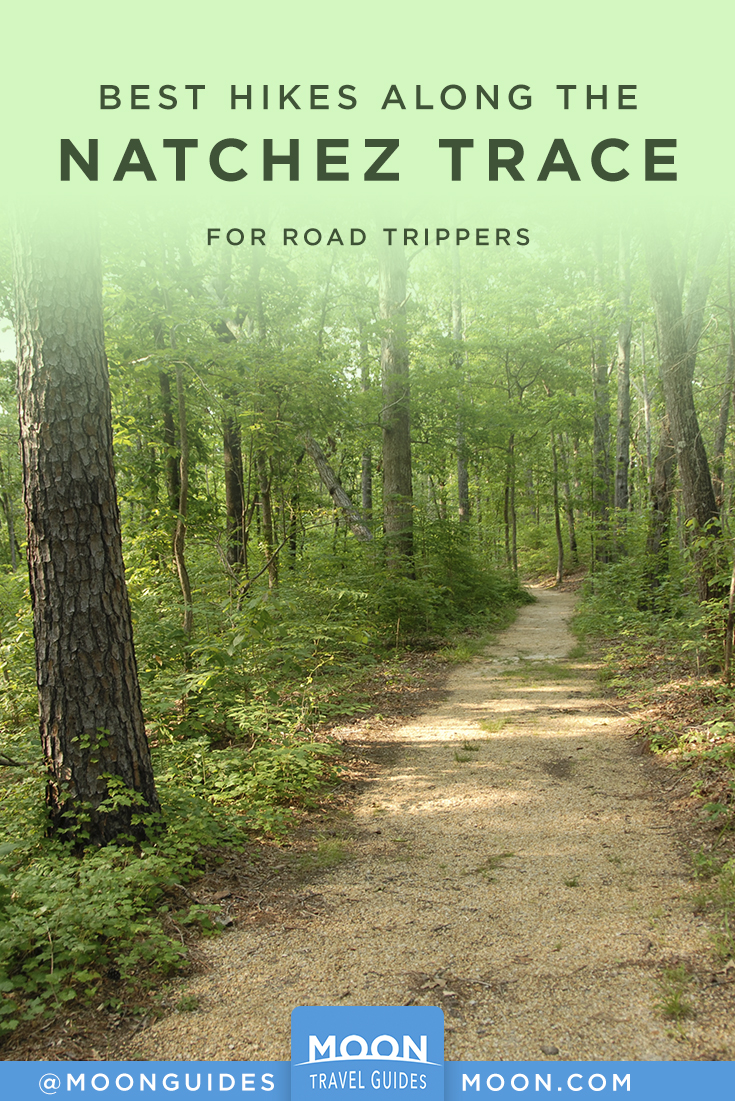Best Natchez Trace Hiking
The Natchez Trace Parkway isn’t just a great drive. It’s also an access road to great walks, some short, some long. Here’s the best of Natchez Trace hiking.
Garrison Creek (Tennessee, milepost 427.6)
The history is as rich as the forest at this creek and trailhead. In the 18th century the woods gave way to a garrison (hence the name) to protect troops from Native American attacks. The long-gone fort was used again in the parkway’s history, most recently as a base during road construction.
Today a paved lot at the site of the former fort includes plenty of parking spots, restrooms, and picnic tables nestled under the shady trees, and room for horse trailers (in the back of the lot). It makes a good place to stretch your legs and eat lunch.
Walk just a few minutes from the parking lot to see small Garrison Creek, which winds its way through the forest. Unlike other waterways along the Trace, this creek is too shallow for swimming. But it makes for pretty scenery and a place for dogs or horses to take a drink.
As the northern terminus of the Highland Rim Trail section of the Natchez Trace National Scenic Trail, Garrison Creek Trailhead is popular with day hikers, backpackers, and equestrians. You will need to cross the creek if you decide to hike here. There’s not a bridge, but several logs and fallen trees make crossing possible.
This is also the starting point for November’s 46-mile Natchez Trace Trail Run, an out-and-back double marathon trail run.
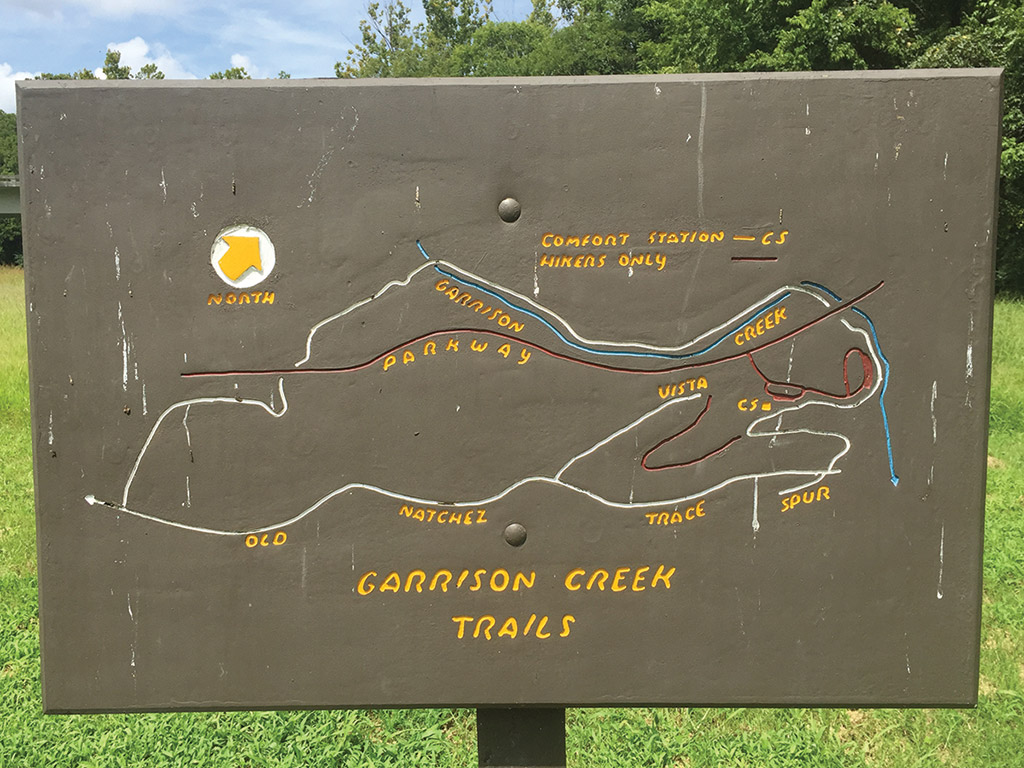
Wichahpi Commemorative Stone Wall (Alabama, milepost 338)
The first stop while heading south on the Trace after crossing the Alabama-Tennessee state line (milepost 341.8) is the somber, yet inspiring, Wichahpi Commemorative Stone Wall (256/764-3617, 8am-4pm daily, free), referred to by locals as “Tom’s Wall.”
Named for the late Tom Hendrix, the man who spent more than 30 years building what has become the largest unmortared wall in the country, the mile-long wall is a monument to Hendrix’s great-great grandmother, Te-lah-nay, and her journey on the Trail of Tears. Each stone, hand-placed by Hendrix (or visitors) beginning in 1988, symbolizes a single step Te-lah-nay took. Today the wall includes stones from more than 120 different countries.
Once here, you can walk in solitude along the maze-like wall, reflecting on its significance and the way in which the United States has treated Native Americans. The land is largely flat and easy to traverse, with many places to stop and rest along the way. Some parts of the path may be difficult for wheelchairs to maneuver. Much of the wall winds its way under oak tree canopies, providing welcome shade in the hot Alabama summer. Some people believe certain stones have specific properties, such as one that is said to cure infertility.
Set aside at least 30 minutes to walk along the wall; double that if you want to sit and listen to stories told by Hendrix’s family. Visitors are welcome to bring their own rocks to add to the wall. Please note that Hendrix’s family considers this a sacred space; treat it respectfully.
Take the first left turn (east) after milepost 338 onto County Road 8 (CR-8). The entrance to the monument is 150 yards down on the right. Because it isn’t an official Trace stop, this is one of the few places on the Trace where you won’t see clear signage (though the signage for County Road 8 is clear). To get back on the Trace after you visit the wall, simply turn around on CR-8, drive 150 yards, and turn left to continue heading south on the parkway.
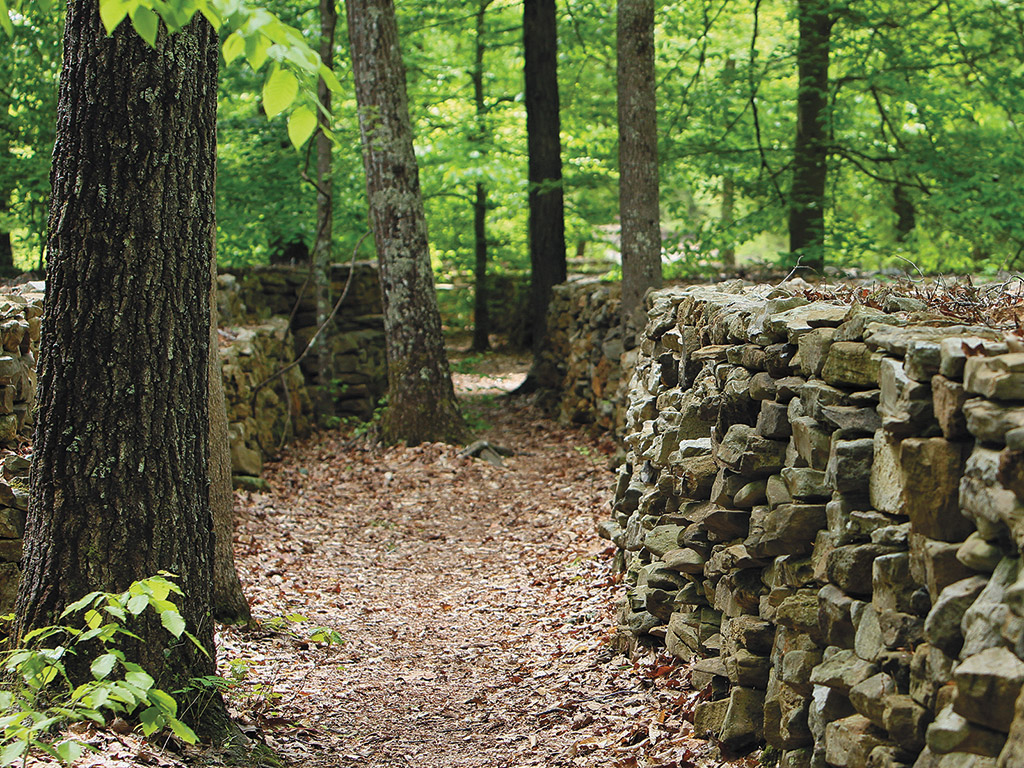
Ready to hit the road?
Rock Spring (Alabama, milepost 330.2)
The first true Alabama Trace stop is a pretty oasis and easy hike. On the left side of the road, follow a short road to a loop parking lot. The parking lot is not visible from the parkway, so look for signage on the right.
From here you can access a simple half-mile loop trail to a bubbling spring. Allot about 20 minutes to walk in this shaded oasis. The terrain is easy, with some picturesque square stepping stones that enable you to cross Colbert Creek (this portion isn’t wheelchair accessible). Birders and wildlife-watchers love this area because the spring provides a home to beavers, ruby-throated hummingbirds, salamanders, and other wildlife. This is a good place to take in wildflowers as well, particularly in the late summer and early fall, when delicate jewelweed is in bloom.
Other than a few parking spots, picnic tables, and the trail, there are no other amenities at this stop.
Bailey’s Woods Trail (Oxford, Mississippi)
Even those who don’t think of themselves as fans of the great Southern writer William Faulkner (1897-1962) will be charmed by Rowan Oak (916 Old Taylor Rd., 662/234-3284, grounds dawn-dusk daily, house 10am-4pm Tues.-Sat., 1pm-4pm Sun. Aug.-May, 10am-6pm Mon.-Sat., 1pm-6pm Sun. June-July; grounds free, house $5), his former family home. The Greek Revival-style house, sitting on 29 acres, offers insight about the Nobel and Pulitzer Prize winner, as well as his creative process. Rowan Oak feels like Faulkner is just out for a walk, with his outline for A Fable scrawled on the walls to help him focus and numbers scribbled next to the phone in the 1844 building. Faulkner restored much of the home himself.
The grounds are said to be the inspiration for Yoknapatawpha County, the fictional setting for all but three of Faulkner’s works. The grounds connect to the University of Mississippi campus through the Bailey’s Woods Trail. It takes about 20 minutes to walk the length of this National Recreational Trail, which comes out at the University Museum. The trail is about two-thirds of a mile long and is well-maintained. Four footbridges span steep areas in the woods.
If you want more than a self-guided look around, call ahead to schedule a tour. Note that the entrance to the home is easy to miss when rounding the bend on Old Taylor Road. From town, drive slowly after passing 10th Street, then turn right.
North of University Avenue and up a few blocks is Saint Peter’s Cemetery (Jefferson Ave. and N. 16th St.), where you can see William Faulkner’s tombstone. The large monument is close to the sidewalk and often covered with whiskey bottles that fans leave for their favorite author.
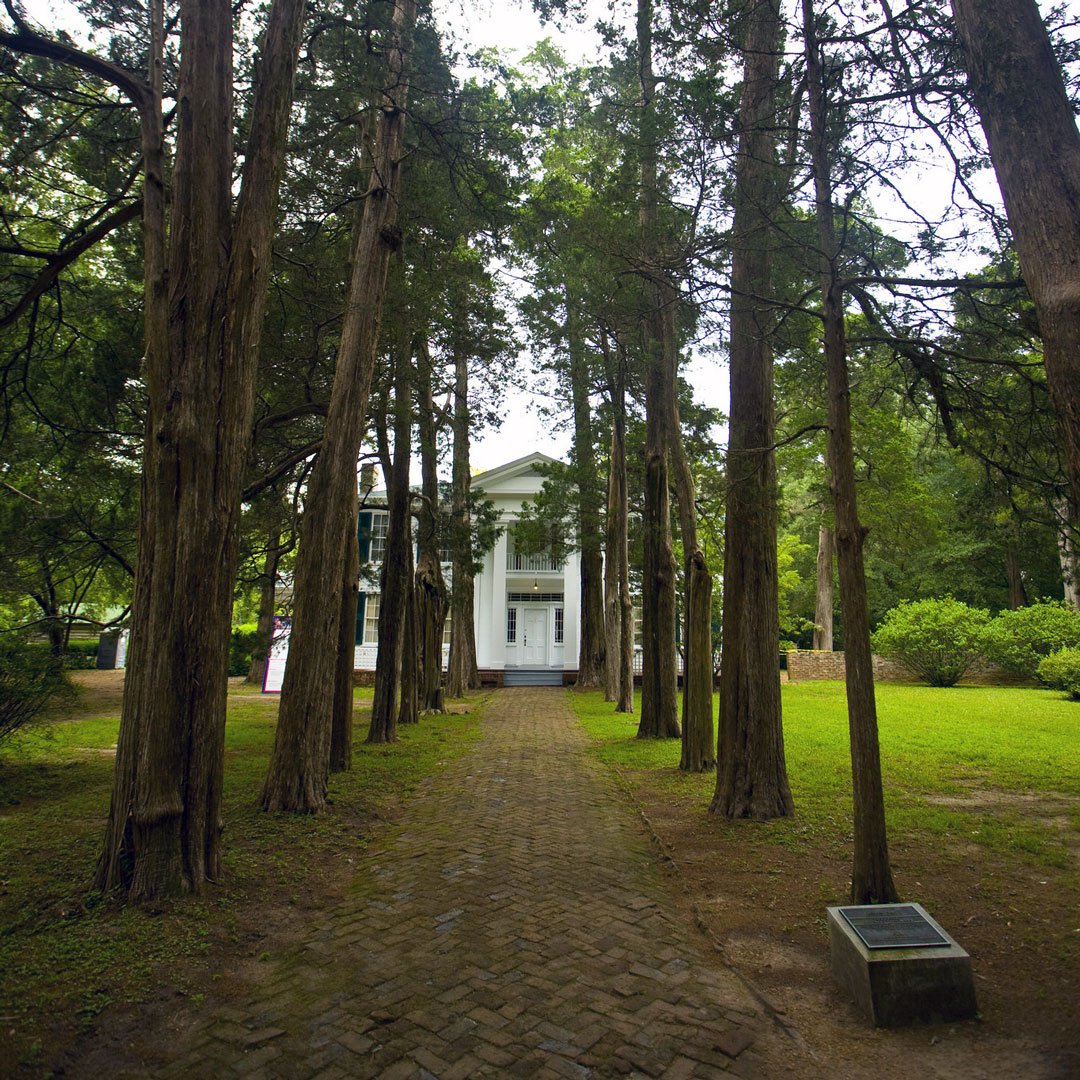
Cypress Swamp Loop Trail (Mississippi, milepost 122)
The Cypress Swamp Loop Trail takes you on a walk of just under half a mile. It starts on a bridge that leads to a boardwalk, which spans a swamp of water tupelos and bald cypress. Because this trail is away from the parking lot and the road, it is unusually quiet and serene. If you’re lucky, you may see some wildlife, such as herons or alligators.
The boardwalk leads to a dirt trail, shaded in the woods, that loops around and comes back to the parking area. This is a very easy trail, about a 20-minute walk, assuming a leisurely pace to take in the unusual views. There are a few steps on the bridge to get down to the swamp level, so it is not wheelchair accessible.
The entrance is on the east side of the parkway. The parking area is visible from the road, but the swamp is not.
To access the Natchez Trace National Scenic Trail from this stop, cross the parkway (to the west side) and look for the green hiking sign. From here it is 14.1 miles south to the West Florida Boundary or 8.9 miles north to the Yockanookany Trailhead.
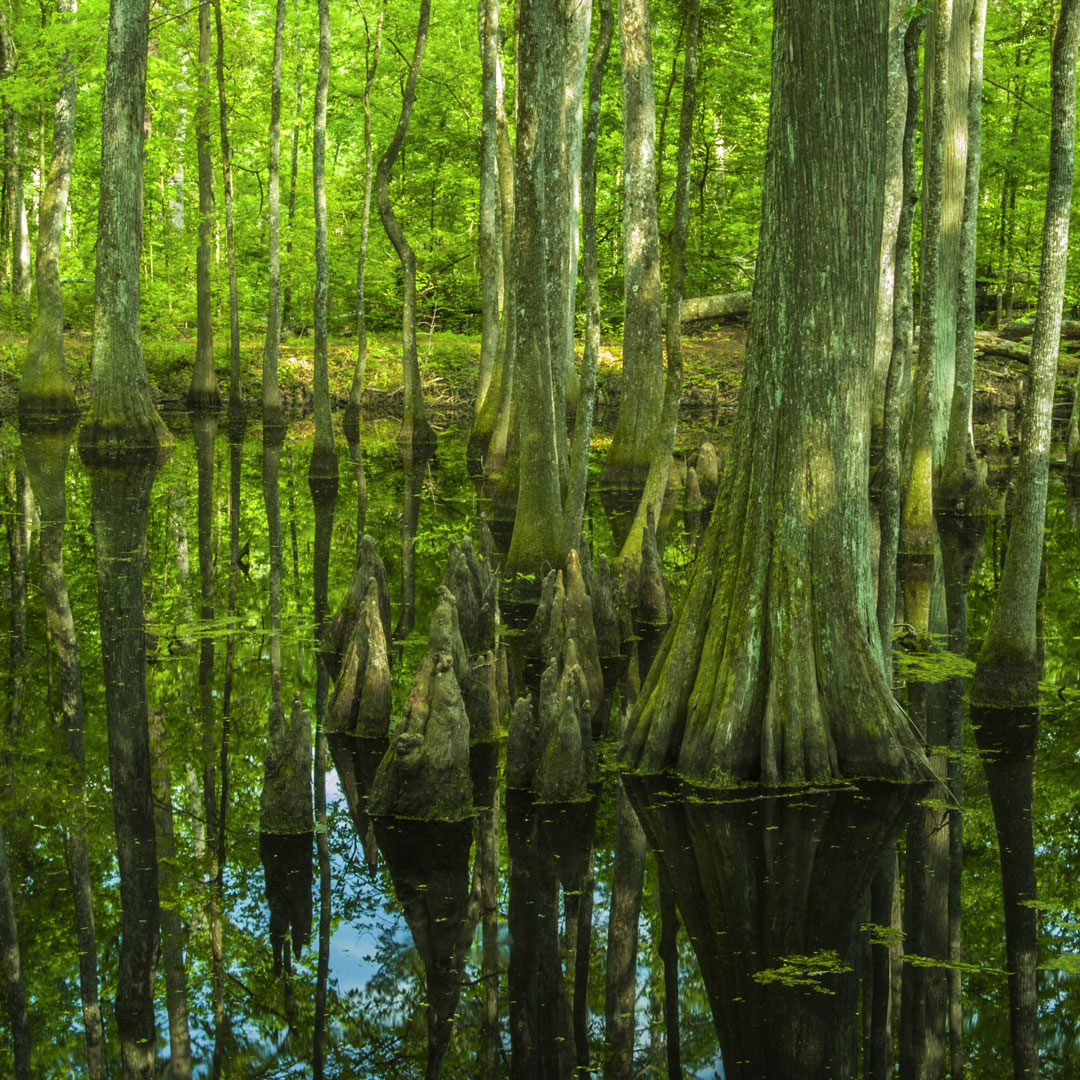
Natchez Trace Multi-Use Trail (Mississippi, milepost 105-100)
Yet another unexpected gem along the Natchez Trace Parkway is the Natchez Trace Multi-Use Trail. Designed for cyclists, pedestrians, and others not in motorized vehicles, this paved recreational trail parallels the parkway, offering a safe way to enjoy the scenery without being in traffic. The trail starts at Reservoir Overlook (milepost 105.6) and runs along the parkway for almost 10 miles. The southernmost access point on the trail is at the Chocktaw Agency (milepost 100.7). (You can continue walking or cycling south, but there is no parking or access to the trail beyond this.) There are plans to eventually extend the trail to the Clinton Visitor Center at milepost 89.
The trail also traverses the city of Ridgeland, where you can access shopping and local parks. Download a full map at www.visitridgeland.com.
Remember to look both ways when crossing the trail, as bikers and those on inline skates may be traveling at a speedy clip.
Pin For Later
